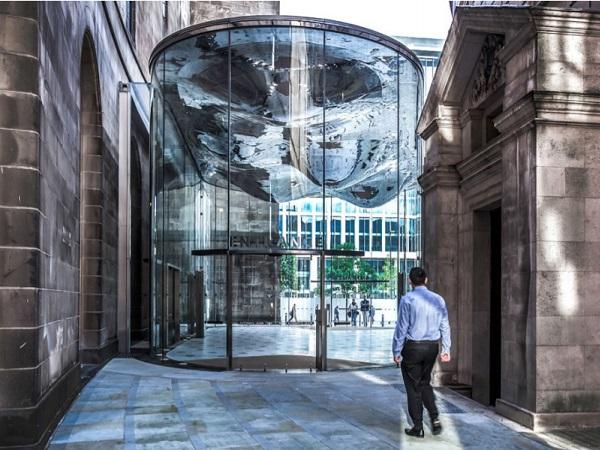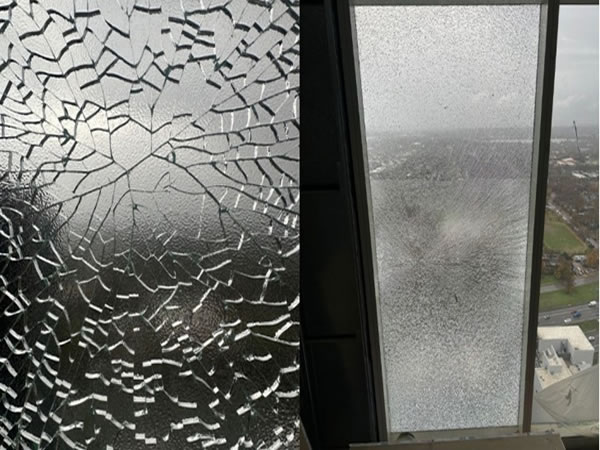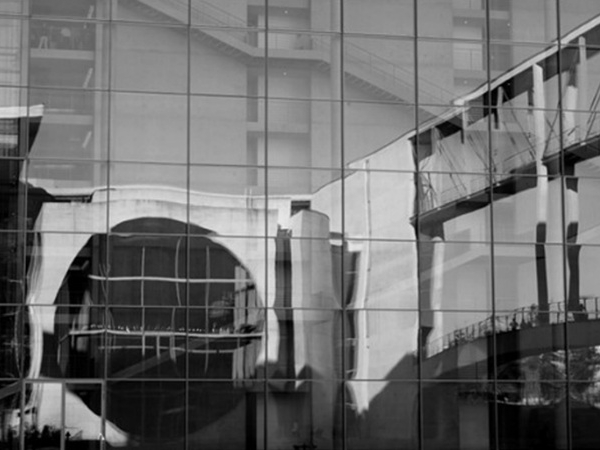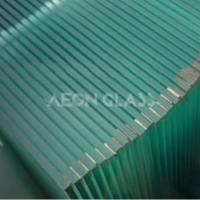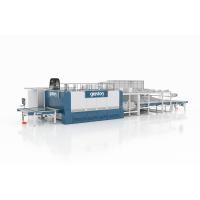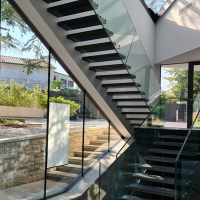First presented at GPD 2019
Introduction
Significant progress has been made in recent years by some universities and few glass manufacturers, in the use of toughened and heat-strengthened glasses in all security areas and for facade design.
On the other hand, considering the visual and surface quality of toughened and heat-strengthened glasses in architecture, it is fair to say that in mass production, especially the visual quality due to roller wave distortion, overall and edge bow, twists and anisotropy in the last 30 years did not improve. This is likely to be mainly due to a tough price war in the market and the ignorance to bring an improved furnace and process technology to use. Citizens sometimes even believe that facades, as shown in Figure 1 and 2, have been deliberately designed.
At least in the area of anisotropies, measures have recently been taken to be able to better evaluate them and derive insights for a reduction in their perceptibility. However, the immediate implementation is still missing for the control of appropriate tempering furnaces and thus the implementation in the product.
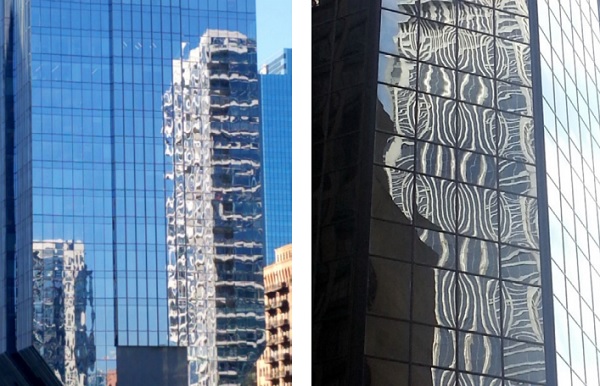
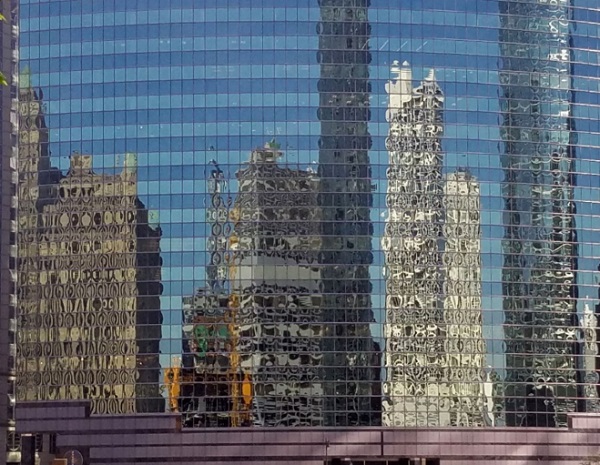
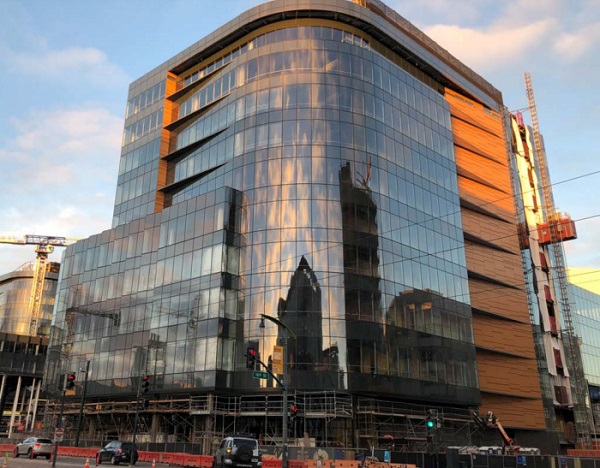
Curved and 3D Glass
Tempered double curved (3D) glass with at the same time increasing smaller and wider radii are more and more requested. Moreover prismatic glasses and 3D tempered and laminated glass of big sizes are applied in top end projects. The feasibility and quality standards of some of the latest developments and perspectives shall be presented in this report.
For the past years, we have been observing a strong architectural trend towards spectacular curved and 3D glasses, too. Only a few companies are able to deliver good quality glass based on their own quality standards. Why? All is possible only because of intensive activities for improvement of Furnaces, Equipment, Production Processes and Quality Control devices and activities.
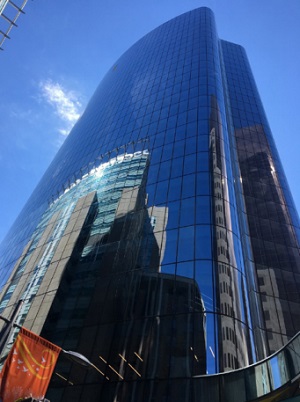
For tempered glass and even for heat treated curved tempered glasses this is even more necessary, but also just on the beginning. Mostly this is done by empiric evolution. This means high personal engagement and high costs for all actions and tests. The target is to recognize hardly that you get tempered glass. Even when individually more expensive after the learning curve of many players it might be less. There would be a remarkable difference in the visual quality and safety performance of glass envelopes.
The principle of glass bending is very simple in theory, but extremely complex in practice. Many parameters are instrumental to the success or failure of a bending process. In addition to the geometric constraints, coatings and the base glass used, e.g. low-iron glass=white glass, can significantly influence the crucial phases of the production process: heating and cooling. Other factors affecting the quality of the finished product are the glass bending establishment’s experience and the bending furnace’s technical characteristics. The feasibility of the envisaged bending geometry in the selected glass structure – possibly with coating – is therefore also manufacturer-dependent.
This is also reflected in the fact that bent glasses are not described by corresponding own standards and regulations and minimum requirements are set and it`s no wonder that the existing standards do not tell very much about curved glass. No EN standards exist to date for curved glass products. The standardization work did not help here in the sense of the “state of the art” to raise the level and thus open up further applications.
EN 12150 Glass in building – Thermally toughened soda lime silicate safety glass
EN 1863 Glass in building - Heat strengthened soda lime silicate glass
The calculation bases in DIN 18008 can be used in conjunction with the values shown in Table 1 of this guideline for the initial dimensioning of curved glass panes. However, the simplified procedure for calculation of climatic loads in DIN 18008 cannot be used for curved insulating glass units. For individual characteristic bending tensile strength values one needs to request specific values for specific products from the manufacturer.

Evidence of the suitability of curved glass products in accordance with the State Building Codes can therefore only be provided in the form of a National Technical Approval or a Project-Related Approval - in future: ProjectRelated Construction Product Approval.
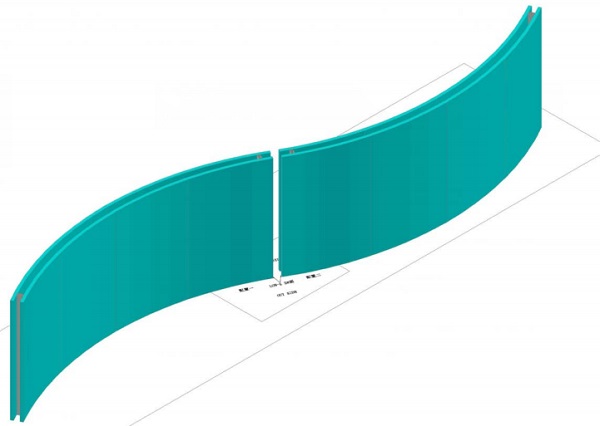
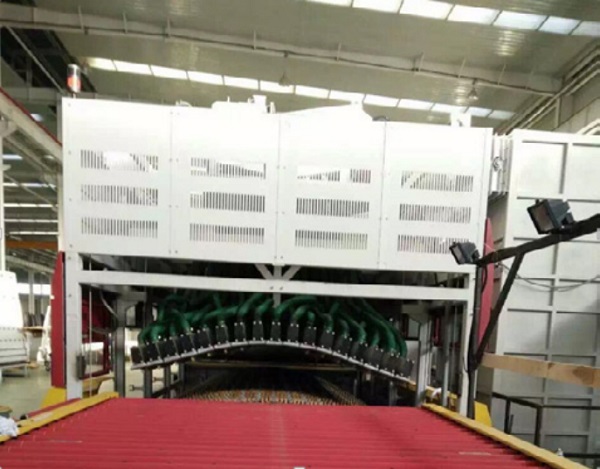
Curved Glass
In this paper I consider the following types of bent glass:
1. Perfect Concave and Convex Tempered Low-E Glass
2. Super High and Small Radius Tempered Curved Glass
3. Super Arc Length and Small Radius Tempered Curved Glass
4. Multi Curved Tempered Glass and Annealed Curved Glass
5. Perfect combination of the prismatic technology
6. Multiple curved slump glass for an amazing light transmission and reflection
1. Perfect Concave and Convex Tempered Low-E
Tempered double curved (3D) glass with at the same time increasing smaller and wider radii are more and more requested, too. When curved panes are manufactured a fundamental differentiation is made between
• slightly curved glass with a curvature radius > 2 meters and
• strongly curved glass with < curvature radii.
A differentiation is further given between single-axis curved glass, cylindrical, conical and multiple-axis = spherical curved glass. With the thermal bending process it is possible to realize very small bending radii.
The interaction between furnace construction, process control and glass processing knowledge is essential. In addition, a. o. there is a very necessary knowledge for glass statics, FEM calculation and a profound knowledge of the glass facade construction required.
What this can bring forth you can see in Figure 4: The Manulife office building in Calgary, Alberta, Canada. 8 mm low iron heatstrengthened glass + 1.52PVB + 8 mm low iron heat-strengthened glass OPTISOLAR US50II Low-E coating on surface 4 + 12Ar + 8 mm low iron heat-strengthened glass + 12Ar + 8 mm low iron heat-strengthened glass + 8 mm low iron tempered Optilite US83 Low-E coating on surface 7, total 20.000 m².
Advantages
• 1 Roller wave should be controlled within 0.125mm / 300 mm, Special tempering performance for roller wave was used
• 2 Irregular curved glass, min radius 1530 mm, max height 4500 mm
• 3 High reflective coating request very small deformation
Please see the special “W” Shape corner on the building. When you look at the corner, you will see in the middle and two side of the corner both all selected curved glass but the whole building maintain same color of the glass.
As everyone knows, the Low-E glass has different color when we are looking from the glass surface or the coating surface. Further the Low-E coating is relatively soft that means when the glass is bend, the coating surface cannot touch the furnace rollers. For this a new technology was developed: concave and convex bending.
Based on such a concave and convex bending furnace, one can maintain the Low-E surface on the surface 2 and bend the glass by both concave and convex way alternatively! At the same time like the super dimensions the field of different bending shapes up to spherical bending shapes was increasingly entered.
After the experiences for the cold bending area, there has been an enormous development in the field of thermal bending in recent years. Qualitatively, this is limited to a maximum of half a dozen companies worldwide. What they all have in common is that progress is usually achieved through empirical development and with a great deal of “trial and error” or better “learning by doing”. The standard market does not make use of it. This is a pity, because a wider application could create the necessary conditions more cost-effectively and systematically.
2. Super High and Small Radius Tempered Curved Glass
Back to 2010, the height limit of the tempered curved glass was 5 m tall, which means this project had to be designed based on 3 separate pieces of glass. A turning point was the request of Mr. James O’ Callaghan.
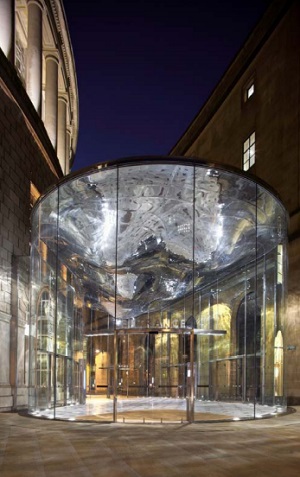
The first step was to start to work with the engineers and design team, if this can be confirmed. After 8 month hard work, the first piece of glass came out! This was used for a famous Pudong Shanghai project (2) :15 mm low iron curved glass + 2.28 SGP + 15 mm low iron curved glass, Size: 12.800 mm x 2.600 mm, Radius: 5000 mm, Weight: ca. 2.5 tons/piece.
Another project in Nanjing was successful designed. This Store has probably the biggest curved tempered glass at that time in the world: IGU 2 x 12 mm low iron curved tempered glass +16 mm air gap + 2 x12 mm low iron curved tempered glass, heat-soaked, 14.500 x 2.450 mm², radius: 21 m; Fin glasses: 5 times 12 mm low iron heat strengthened +4 x 1.52 mm SGP, 14.200 x 600 mm².
The glass for Manchester City Hall f. i. is not only a curtain wall, but also the structure support. The stainless steel roof is placed on the glass directly. The visual quality is outstanding.
1. Glass make-up: 3 x 12 mm low iron glass + 2 x 1.52 SGP
2. Height: 8 m
3. Radius: 5 m
4. No fins, use jumbo size steel shoes at top and bottom to handle the structure
5. This project was designed by the structure glass supporting the huge weight stainless steel roof
3. Super Arc Length and Small Radius Tempered Curved Glass
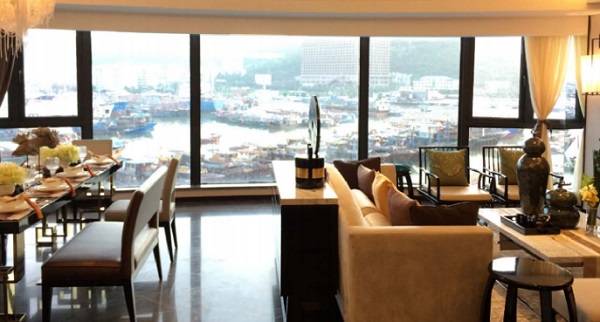
Using the latest ultra-long arc length technology, means one piece of glass as main window. It’s awesome to get a view like this.
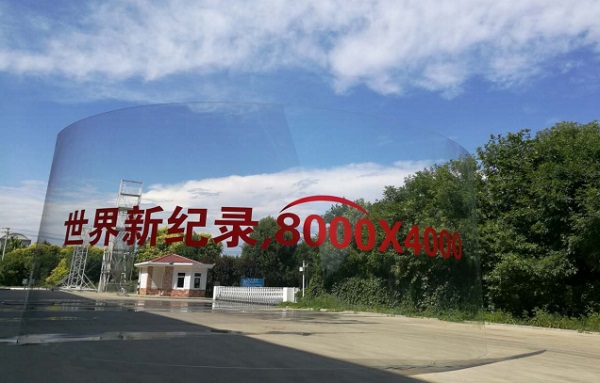
This glass has 8 m arc length and 4 m height, the minimum radius is 4 m based on this size.
When we talk about the super arc length curved glass, it might be like a wide view glass. However, a headache comes quickly after first excitement. Asking, what will be the best width of the furnace, a lot of architects, consultants, Figure 6: Manchester Town Hall 400m² from TNG (2) builders and also float glass suppliers (in China).
Finally the decision was: the width of the furnace need to be 4000 mm and the arc length need to be 8000 mm. There are two reason to make this decision:
• One is because the most of the houses have roof higher than 3300 mm and entrance lobbies are up to 4000 mm and even higher
• Second reason is the possibility to source maximum 4000 mm wide float glass in China!
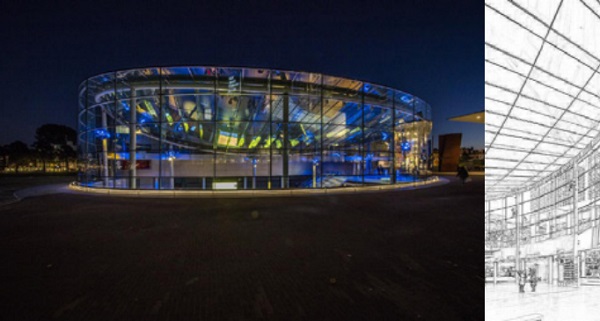
4. 3D Annealed Glass and Tempered Glass
To ensure glass quality, Tianjin Northglass for Nike Shanghai cooperated with both China National Building Materials Research Institute and China Academy of Building Research on technical communications, and conducted a lot of tests and preparation work at the early stage of production. In the period of production, Northglass technicians strictly followed all phases and carefully do plenty of glass inspection work one by one to guarantee that all data of every glass pane met the customer`s design requirements before delivery.
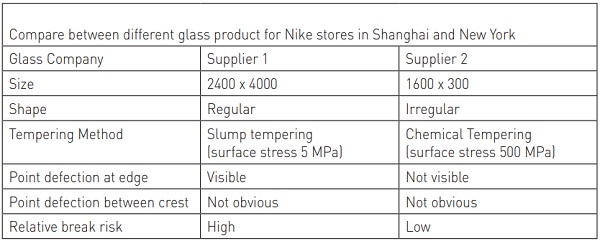
For New York Nike Flagship Store (3) to give the glass its shape, the modules were slowly heated to the softening point, around 1000 degrees Fahrenheit, where the materials slumps into customized molds.
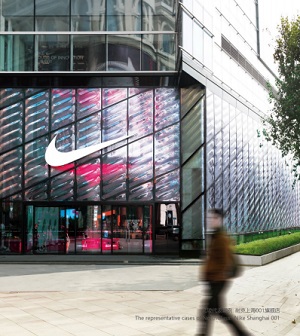
Once the glass panels have achieved their desired geometry, they are slowly cooled in an annealing process. Installed as a double-glazed curtain wall with 2 Low E.
Where the entrance tapers upward, they fabricated three variations of trapezoidal panels and a singular triangular panel. Novel in terms of architectural application, the slumped glass was also CNC-carved with a series of striations perched at a 23.5-degree angle in the style of Nike’s iconic Swoosh logo.
As a re-cladding project, the facade’s assembly is relatively straightforward. According to the facade consultants for the project, “the glass facade is hung from the existing roof level with a grid of custom shaped steel mullions and transoms, pinned back for lateral loads at the 5th, and 3rd floor, and just above the ground.
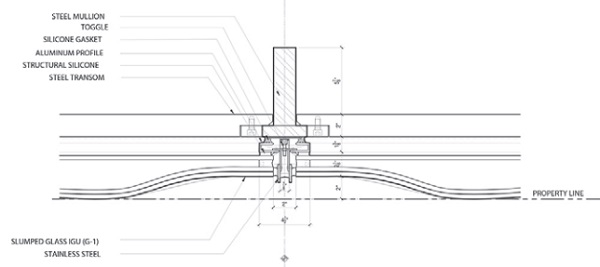
Shanghai solution (2): 1500 x 3600 mm², 8 mm low iron slump bending glass + 2.28 SGP + 8 mm Low Iron Slump Bending Glass + 20mm Air space+8 mm Low Iron high light transmission coating Low-E. Bent height 50mm, tempering strength 600 MPa. A perfect combination of the prismatic technology and multiple curved slump glass together to create an amazing light transmission and reflection.
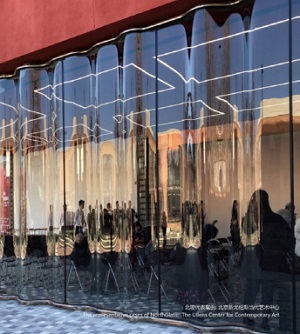
The so-called “slab” at the front of the building has been refaced with bright red stucco and gridded black windows. The ground floor walls were demolished, leaving only supporting columns. “The building appears to float above the surrounding street, as if suspended atop the glass facade that elegantly curves and folds around the columns,” according to a statement on the redesign. As a result, there has been a “drastic increase” in attendance and membership.
Glass is becoming increasingly popular as a building shell element among both planners and building owners. Glass developments over recent decades have shown that there are very few limits to creativity when it comes to the use of glass as a building material.
In fact, glass provides planners and building owners with an extensive range of design options. This is the challenge for curved glass. It enables them to create multifunctional, geometrically complex facades.

Future Developments
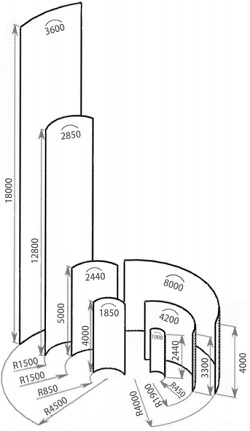
• Multi curved glass of 3300 x 12000 mm The make-up can be composite structure energy-saving glass and can also be a customized twisted shape, a 360 degree rotating spiral shape, similar to the saddle shape, and the spherical shape can also be achieved.
The deepest arch height is expected to reach 1000 mm. The glass also can be used with DIP technology to print various patterns, to achieve a variety of realistic architectural styles. The multi-curved tempering glass can be also used with double silver, triple silver and antireflection coating film to achieve a variety of performance needs.
• 3D curved glass with 3 m radius At present, the diameter is 3 m, radius is 25 m, and arch height is 45 mm. It is expected to achieve 4 meters diameter, and the arch height to achieve 1000 or to achieve a semi-circular curved glass. The glass also can be used with DIP technology to print various patterns, to achieve a variety of realistic architectural styles. The multi-curved tempering glass can be also used with double silver, triple silver and anti-reflection coating film to achieve a variety of performance needs.
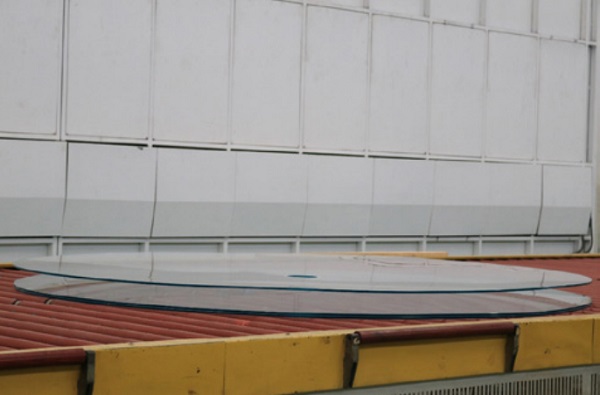
References:
(1) Bucak, O., Feldmann, M., Kasper, R., Bues, M.Illguth, M.: The building product “Thermally curved glass”: testing procedures, consistencies, and quality assurance, Special Edition on Steel Constructions (2009)
(2) TNG Tianjin Northglass Industrial Technical Co., Ltd., 20 Baozhong Road, Tianbao Industrial Park, Baodi District, Tianjin, P.R. China, 301823
(3) Cricursa C/Cami de Can Ferran s/n, Pol. Ind. Coll de la Manya, 08403 Granollers, Barcelona
(4) Heintges Building Envelope & Curtain Wall Consultants, 440 Park Avenue South, 15th Floor, New York, NY 10016 and 101 Second Street, Suite 325, San Francisco
Please make contact via helmut.hohenstein@hohenstein.biz

